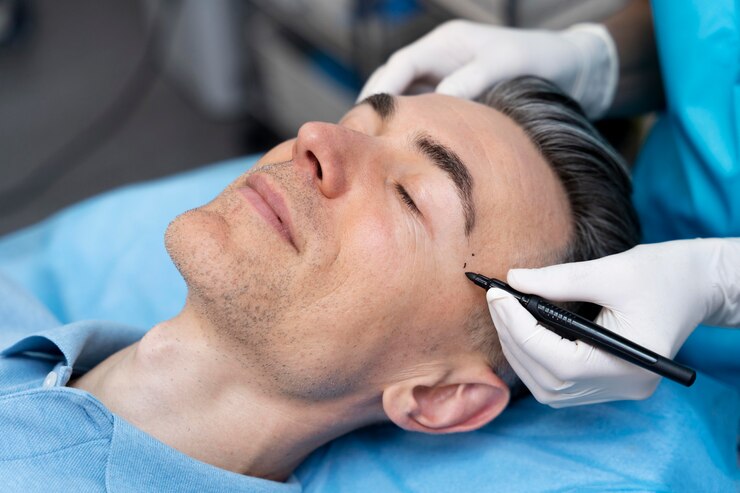
Eyebrow Transplant
What is an Eyebrow Transplant?
An eyebrow transplant involves extracting healthy hair follicles and implanting them into the eyebrow area. Since hair from the scalp grows differently than eyebrow hair, it may need to be trimmed or shaped regularly to maintain a natural look.
Techniques Used in Eyebrow Transplants
Follicular Unit Extraction (FUE):
- Individual hair follicles are extracted from the donor area and transplanted into the eyebrows.
- This method is minimally invasive and results in less scarring.
Follicular Unit Transplantation (FUT):
- A strip of scalp is removed, and follicles are extracted from it.
- This method is less commonly used for eyebrow transplants but might be recommended for cases requiring many grafts.
Direct Hair Implantation (DHI):
- A specialized tool is used to place hair follicles directly into the eyebrow area, providing precision and ensuring a more natural growth direction.
Reasons for Eyebrow Transplants
- Genetics: Naturally thin or sparse eyebrows.
- Over-plucking or Over-waxing: Damaged or lost hair from years of grooming.
- Alopecia or Medical Conditions: Conditions like alopecia areata or thyroid disorders can lead to hair loss in the eyebrow region.
- Scarring: From accidents, surgery, or burns affecting the eyebrow area.
Procedure
- Consultation: Discuss your eyebrow shape, density, and desired outcome. The surgeon will assess the donor area to ensure there are sufficient healthy follicles.
- Extraction: Hair follicles are extracted from the donor area (typically the back of the scalp) using FUE or FUT methods.
- Implantation: The extracted follicles are carefully implanted into the eyebrow area, following the natural growth pattern.
- Post-Procedure Care: Swelling, redness, or scabbing may occur, which typically resolves within a week. Transplanted hair may shed within the first few weeks, but new hair should start growing in 3–4 months.
Benefits of Eyebrow Transplants
- Natural Appearance: The results blend with natural eyebrow hair.
- Permanent Solution: Transplanted hair grows permanently, though it may require trimming to maintain the shape.
- Personalized Shape: Eyebrows can be customized to fit your facial features and aesthetic preference.
Ideal Candidates for Eyebrow Transplants
- Individuals with thin or patchy eyebrows due to genetics or over-grooming.
- People with medical conditions causing hair loss, such as alopecia.
- Those in good health with enough donor hair for transplantation.
Recovery and Results
- Recovery: Mild swelling, redness, or scabbing may last 1–2 weeks. Follow the clinic’s post-procedure instructions for optimal results.
- Growth Timeline: Transplanted hair will shed after a few weeks, with new growth visible after 3–4 months. Full results are typically seen in 9–12 months.
